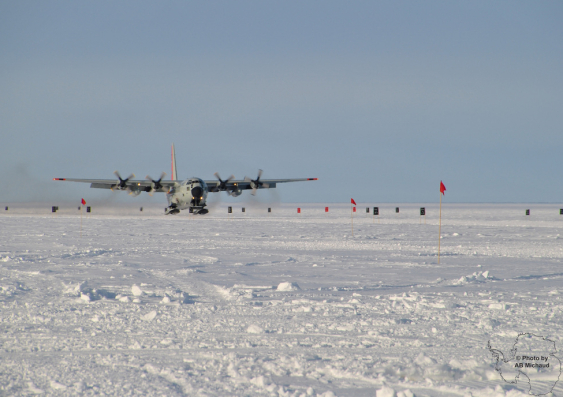'The discovery for our lifetime': UNSW scientist to take part in key Antarctic mission
Antarctic core sediments hold information that is key to building a better picture of sea level rise.
Antarctic core sediments hold information that is key to building a better picture of sea level rise.

Lilly Matson
UNSW Science
0426 656 007
l.matson@unsw.edu.au
Recent research has shown it’s inevitable that the warming Southern Ocean will speed up the melting of parts of the West Antarctic Ice Sheet (WAIS), regardless of our future carbon dioxide emissions.
If completely melted, the WAIS holds enough ice to raise sea level by 5m.
To help answer questions about the rate and speed of sea level rise, we have to turn to the geological record and recover sediment from regions near the centre of West Antarctica that were deposited during past times, when it was warmer than today.
The (SWAIS 2C) is an international research project designed to determine whether the Ross Ice Shelf – the largest ice shelf in Antarctica – and West Antarctic Ice Sheet will melt as Earth’s average surface temperature approaches 2°C above pre-industrial records.
Deep core sediments in the Antarctic hold environmental information that is key to our future but has been impossible to obtain. Now, an international team of researchers and drillers leave Christchurch for Antarctica on 16 November.
Dr Rebecca Parker, from UNSW’s School of Biological, Earth & Environmental Sciences, is a paleoceanographer and micropaleontologist who will be joining the SWAIS 2C project this summer. “I am driven to understand how much and how fast the Antarctica Ice Sheets are melting so society can have a grip on how fast the seas will rise,” says Dr Parker.
We aren’t yet certain about how much and how fast the ice in West Antarctica will melt. While sectors of the WAIS appear highly vulnerable, when and under what climatic conditions we will lose the large buttressing ice shelves that stabilise the ice inland remains unclear.
To understand more about Antarctica’s potential contribution to sea level rise, a team of drillers, engineers, and researchers will travel about 800km via traverse and airplane to the southeast margin of the Ross Ice Shelf. The collaborative team will drill up to 200m below the seafloor to recover a geological record of changing rock types that reflect environmental conditions at the time they formed.
“We will drill into the sediment beneath the West Antarctic Ice Sheet. The layers of sediment record the history of how the West Antarctic Ice Sheet has evolved through time — a bit like how the pages of a book tell us a story,” says Dr Parker.
Read more:
More than 120 people from around 35 international research organisations are collaborating on the SWAIS2C project, including around 25 early-career researchers. SWAIS 2C brings together researchers from New Zealand, the United States, Germany, Australia, Italy, Japan, Spain, Republic of Korea, the Netherlands, and the United Kingdom.
“The melting of polar ice is a very dynamic process that has occurred many times in the past,” says Dr Parker, who is based at the UNSW Chronos Radiocarbon Facility. “We vitally need to recover these precious archives of warming oceans and melting ice to understand the true impacts of accelerated warming caused by humans, to best mitigate and adapt to a more sustainable future.”
The team calls SWAIS 2C “the discovery for our lifetime” and hopes that results will guide plans to adapt to unavoidable sea level rise, while amplifying the imperative to mitigate global greenhouse gas emissions.
“Our approach to drilling is novel and not without risk, but it’s the only way we are going to get those critical samples. If we are successful and prove that this new drilling system will work, it will open up new opportunities to obtain key records of environmental change and ice sheet dynamics at other remote locations across Antarctica,” said Richard Levy, Co-Chief Scientist on the project. “There is not a lot of existing data around to improve our knowledge of what we find before we drill. We will learn a lot by drilling and are likely to get a few surprises – but this is exploration, by definition.”
This summer, the SWAIS 2C mission will set out onto the ice to obtain robust, direct evidence for potential ice collapse, under different environmental conditions.
“On the SWAIS 2C project, I plan to work on the small glass skeletons of a marine phytoplankton, called diatoms, that live within the ocean water and accumulate in the sediment over time. These diatoms will reveal a story of what ocean conditions were like when they grew in Antarctica.”
Retrieving samples from such remote locations in Antarctica will allow us to build a much better picture of how Antarctic ice will respond to future warming, which parts will melt first, and which parts will remain.